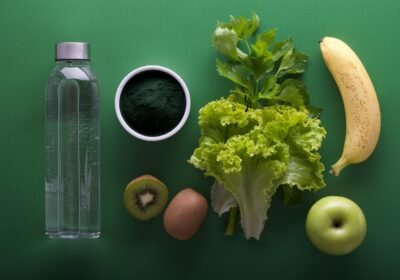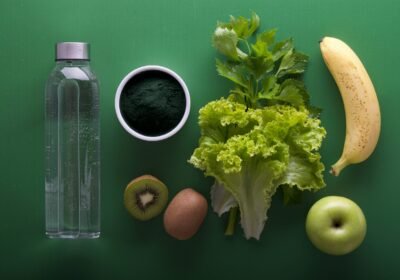Discover the Power of Senegalese Millet: The Trending Health Tip You Need to Know!
Introduction to Senegalese Millet
Millet, a staple grain within Senegalese cuisine, is enjoying a resurgence in popularity, particularly as health-conscious individuals seek nutrient-dense foods to incorporate into their diets. Historically, millet has been a fundamental element in the daily meals of many Senegalese households, often consumed in various forms such as porridge, flatbreads, and as an accompaniment to stews. The grain’s versatility makes it a favored choice, ensuring it fits seamlessly into diverse culinary traditions.
Nutritionally, millet is lauded for its impressive profile, which includes high levels of fiber, protein, and essential vitamins and minerals. This makes it an excellent option for those looking to enhance their overall health, reduce their risk of chronic diseases, and maintain a balanced diet. Being naturally gluten-free, it has also become a crucial component for individuals with gluten sensitivities or celiac disease.
The current health trend emphasizing the consumption of whole grains highlights millet’s increasing recognition as a superfood. This shift aligns with a broader movement towards more plant-based diets and the adoption of ancient grains, which are valued for their robust nutritional benefits compared to highly processed alternatives. As people become more aware of the benefits of nutrient-rich foods, Senegalese millet is gaining global attention, particularly for its role in supporting cardiovascular health, stabilizing blood sugar levels, and promoting digestive well-being.
In Senegal today, the rising interest in ancient grains is not only preserving culinary traditions but also encouraging a renewed appreciation for locally sourced ingredients. As millet cements its status as a trending health tip, it invites both locals and global consumers to reclaim this ancient grain and incorporate it into their daily diets for enhanced health benefits.
Health Benefits of Millet
Millet has recently gained popularity as a health food, particularly in Senegal, where it is being recognized for its numerous health benefits. One of the most significant attributes of millet is its high fiber content. With around 7.6 grams of fiber per cooked cup, millet can aid in maintaining a healthy digestive system. This fiber intake not only promotes regular bowel movements but also helps in feeling fuller for longer periods, making it an excellent choice for those managing their weight.
Furthermore, millet possesses a low glycemic index (GI), which is particularly beneficial for individuals looking to control their blood sugar levels. Foods with a low GI are digested slowly, leading to gradual increases in blood glucose levels—essential for diabetic individuals or anyone aiming to maintain stable energy levels throughout the day. By incorporating millet into meals, individuals can enjoy its delightful taste while promoting better management of their blood sugar.
In addition to its dietary attributes, millet is rich in essential minerals such as magnesium, phosphorus, and iron. Magnesium supports numerous biochemical functions, including muscle function and nerve signaling, thereby improving overall heart health. The high phosphorus content contributes to strong bones and teeth, while iron is vital for the production of hemoglobin, improving oxygen transport in the body. Consequently, these minerals not only enhance the nutritional profile of millet but also contribute to overall well-being.
Overall, millet stands out as an ancient grain that offers modern health solutions. Considering its diverse benefits, millet can easily be incorporated into a variety of dishes, from salads to porridge, making it a versatile option for health-conscious individuals seeking natural dietary solutions.
Incorporating Millet into Your Diet
Millet is a versatile grain that has gained popularity due to its numerous health benefits and adaptability in cooking. Incorporating millet into your diet does not require extensive culinary expertise. Start by selecting the type of millet you prefer; common varieties include pearl, finger, and foxtail millet. Each type offers a unique flavor and texture, making them suitable for different culinary applications.
To prepare millet, rinse it under cold water to remove any impurities. A common cooking method involves using a ratio of 1 part millet to 2 parts water. Bring the water to a boil, add the millet, and reduce the heat to a simmer. Cover the pot and cook for about 20 minutes or until the water is absorbed and the millet is tender. Once cooked, millet can be fluffed with a fork, ready for further use.
One of the simplest ways to incorporate millet into your daily meals is by adding it to salads. For instance, a refreshing salad can be made by mixing cooked millet with diced cucumbers, tomatoes, and a light vinaigrette. Additionally, millet can serve as a great base for grain bowls; topping it with grilled vegetables, legumes, and a drizzle of tahini sauce can create a satisfying, nutritious meal.
In Senegal, millet is often featured in traditional dishes such as “nyamakhulu” or “couscous.” These recipes highlight the grain’s versatility and can inspire home cooks to experiment with millet. Moreover, incorporating millet porridge into breakfast can provide a hearty and wholesome start to the day; simply cook millet with milk or water, and top with fruits and nuts for added flavor.
In conclusion, millet is an excellent grain to enrich your diet. With its ease of preparation and endless recipe possibilities, it is a trend worth embracing. By incorporating millet into your meals, you can enjoy its health benefits while exploring the culinary traditions of Senegal.
The Future of Senegalese Millet in Health Trends
As health-conscious consumers increasingly seek alternatives to conventional grains, Senegalese millet is emerging as a vital player in the evolving landscape of healthy diets. The rising demand for gluten-free grains has catalyzed a shift towards millet, whose nutritional profile offers several advantages, including its high fiber content, essential amino acids, and rich mineral composition. Widely recognized for its adaptability to various climatic conditions, millet is not only resilient but is also a staple in the Senegalese diet, promoting both local food security and nutritional health.
Globally, there is a growing advocacy for ancient grains, with millet gaining traction in various culinary contexts outside Senegal. As more people become aware of the advantages associated with gluten-free diets, the popularity of millet could significantly increase. This trend highlights the broader movement towards sustainable agriculture, especially as millet cultivation requires less water and fewer resources compared to other grains. Hence, incorporating millet into dietary habits could align with both health benefits and environmental sustainability efforts.
In addition to its robust nutritional profile, millet cultivation supports local economies and farming communities. By promoting Senegalese millet, markets can enhance local agricultural practices while providing farmers with fair trade opportunities. Governments and organizations championing health trends are beginning to recognize the potential of millet as a functional food, further encouraging investment in research and development as well as educational programs aimed at incorporating millet into mainstream diets. These advocacy efforts could solidify millet’s status as more than just a traditional grain, positioning it as a global superfood.
As dietary habits continue to shift towards health-centric choices, millet’s role as a gluten-free grain could redefine future food landscapes, not just in Senegal but around the world. Encouraging these practices fosters community resilience and builds awareness about the environmental footprint of the food industry, making millet a compelling option for those seeking both nutrition and sustainability.









